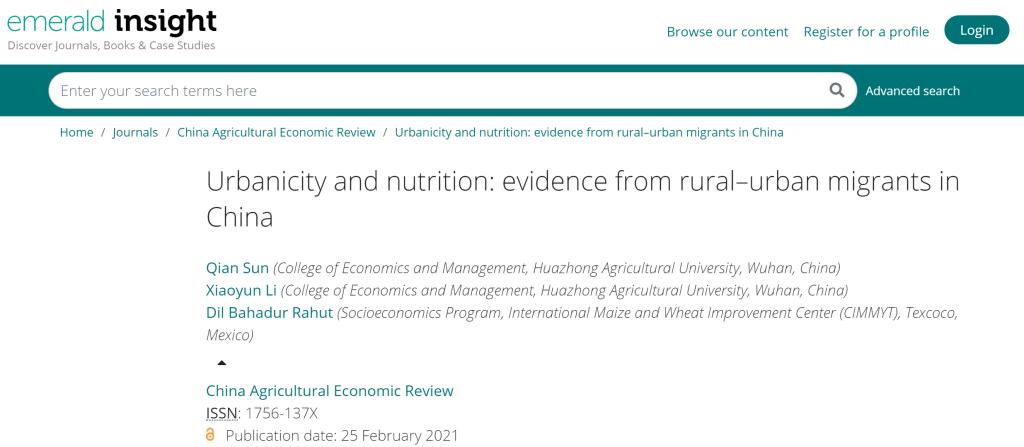Recently, a team led by Prof. Li Xiaoyun from the College of Economics & Management of Huazhong Agricultural University (HZAU) publishes a paper on Emerald Insight about the impact of urbanicity on Chinese rural-urban migrants’ dietary diversity and nutrition intake. Focused on the migrants, the paper adopts a two-way FE model (individual- and time-invariant fixed effects) based on data from the China Health and Nutrition Survey (CHNS). The team not only explores how community urbanicity influence the migrants’ dietary diversity and nutrition intake, but also digs into the heterogeneity of the influence between rural-urban migrants and rural-suburban migrants.

The study shows that compared with local residents, the migrants have remarkably lower dietary consumption and nutritional intake. Also, among the migrants, the ones who move downtown have significantly better nutritional intakes than those who settle in the suburbs. The more urbanized a community they living in, the more diverse their food consumption will be.
To what degree the community urbanicity affects calorie intake also varies with per capita household income. According to a marginal utility analysis, a more urbanized community doesn’t necessarily result in a notable increase on calorie intake of low-income migrants, but of relatively high-income migrants. However, simply raising per capita household income is not helpful for the rise in calorie intake of migrant dwelling in underdeveloped communities.
In addition, the paper also unveils an inverse U-shaped relationship between urbanicity and the shares of total calorie intake from protein and fat. That’s to say, urbanicity cannot continuously lead to better sources of calorie intake. The shares of total calorie intake from protein and from fat will peak when the urbanicity index reaches 66.69 and 54.36.
The conclusion are as follows:
In highly urbanized regions, problems like obesity, caused by excessive calorie intake, requires more attention, especially for the high-income migrant groups in developed cities.
In less developed cities or suburbs, to improve nutritional quality of relatively low-income migrants requires increasing incomes and ameliorating community conditions at the same time.
From the perspective of urban development, the study provides sound evidence for making decisions in improving nutrition intake and optimizing dietary structure of the urban-rural dwellers.
Souce: http://news.hzau.edu.cn/2021/0226/59457.shtml
Link of the paper: https://www.emerald.com/insight/content/doi/10.1108/CAER-02-2020-0016/full/html#sec005
Translated by: Cheng Yixuan, Chen Song, He Tongtong
Supervised by: Zhang Juan
